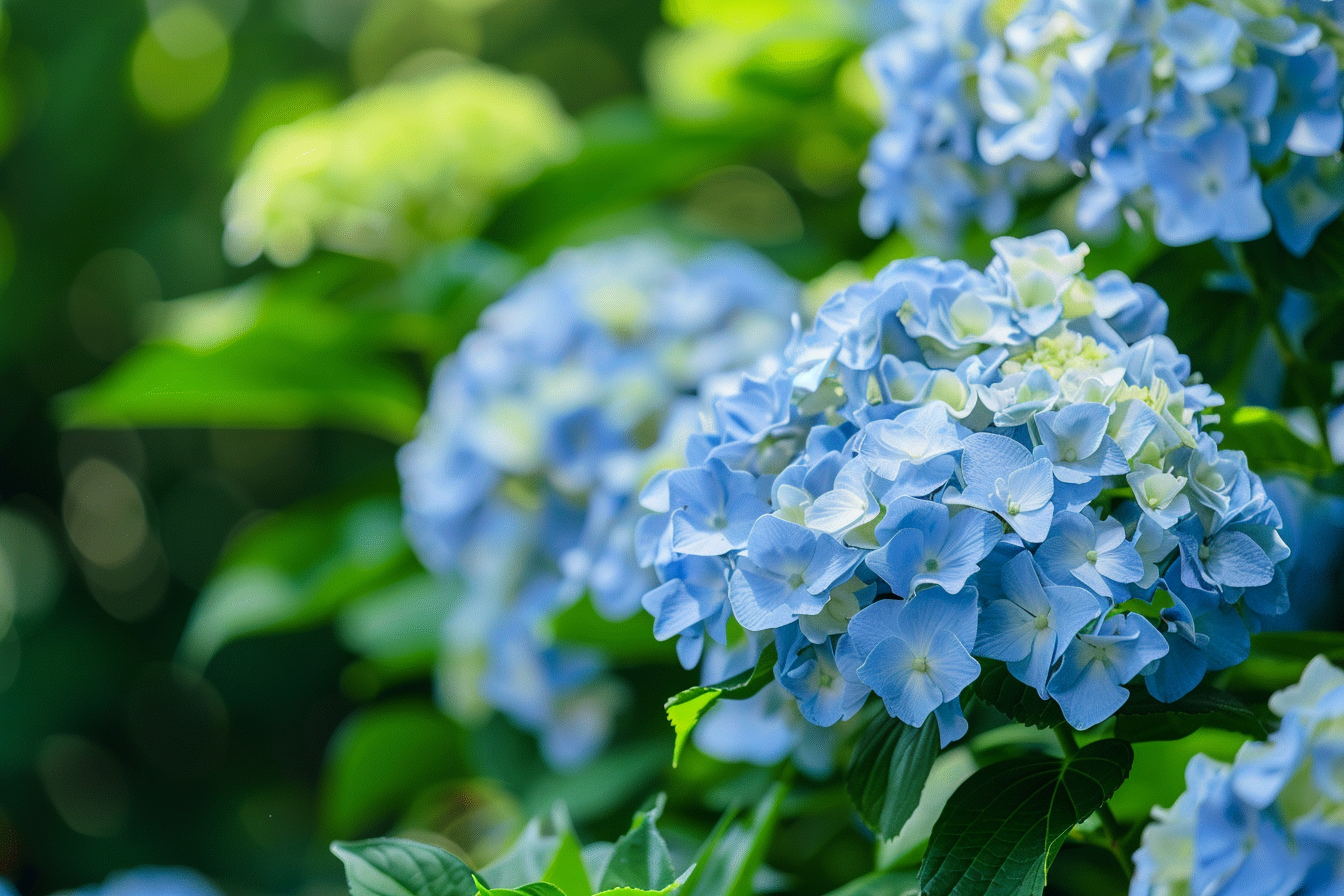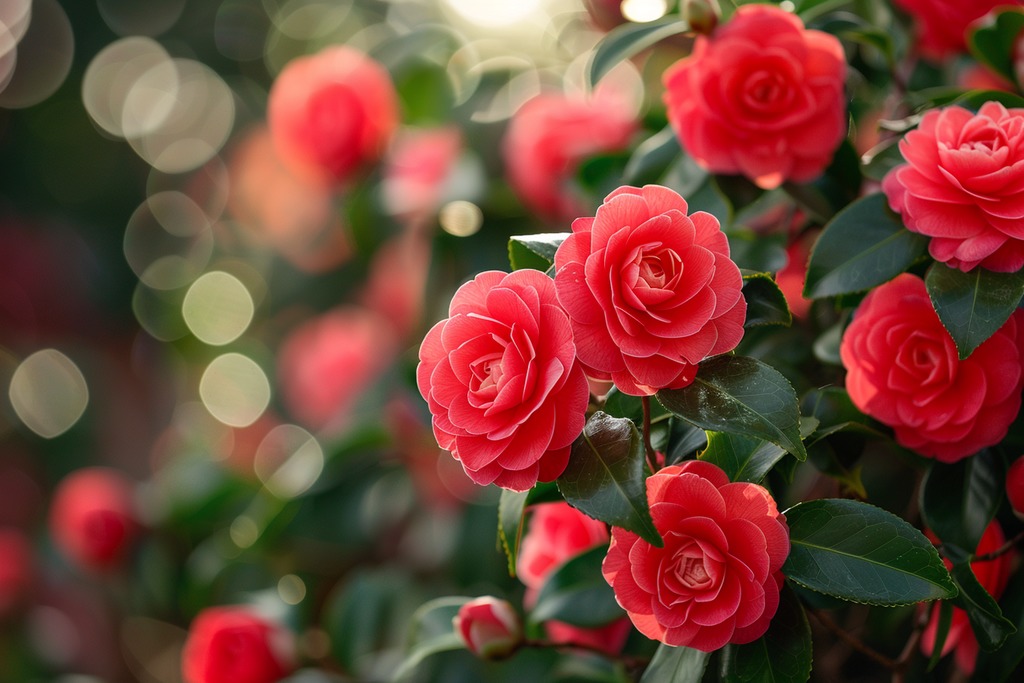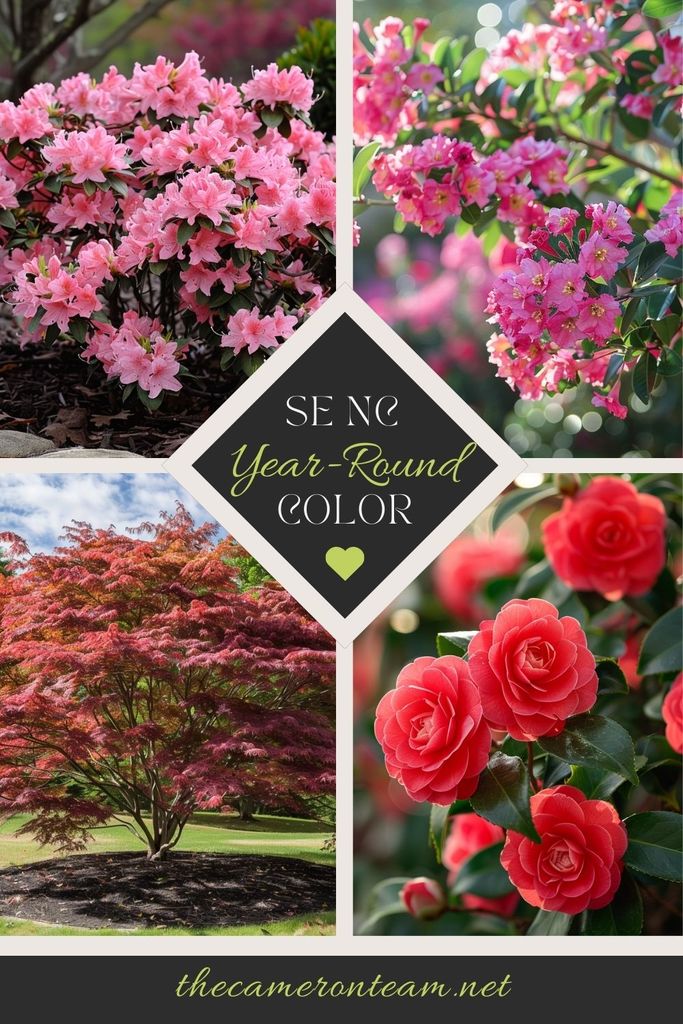Imagine stepping into your garden, coffee in hand, greeted by a kaleidoscope of colors that change with the seasons. In Southeastern North Carolina, zones 8a and 8b offer a unique gardening opportunity to create a landscape that’s alive with color throughout the year. This guide will walk you through a handpicked selection of plants, shrubs, and trees that don’t just survive but thrive, ensuring your garden remains a vibrant oasis from January to December.
Please note: The Cameron Team has not been paid or received any other compensation to include any of the products featured on this post, but the author has included affiliate links and content. If you click on a link, they may earn a commission – a high-five for great content!
Understanding Your Zone
Zones 8a and 8b in Southeastern North Carolina are characterized by mild winters and warm, humid summers. This climate offers a broad palette of gardening possibilities. Understanding your specific zone is key to selecting plants that will flourish in your garden, providing color and interest across all four seasons.
Spring Spectacles
Spring in zones 8a and 8b is a time of renewal, with gardens coming alive with vibrant blooms and fresh foliage. Consider planting:
- Azaleas (Rhododendron spp.): With their dazzling array of colors, azaleas are a springtime favorite. They prefer slightly acidic soil and partial shade.
- Dogwood trees (Cornus florida): The quintessential spring tree, dogwoods display beautiful white or pink flowers that herald the start of the season.
- Forsythia (Forsythia spp.): A true herald of spring, forsythia bushes explode into brilliant yellow blooms before their leaves appear.
- Tulip Tree (Liriodendron tulipifera): Not your average tree, it offers tulip-like flowers in spring, adding a unique touch to your garden.
Summer’s Lush Canvas
As temperatures rise, these plants will keep your garden lively:
- Crepe Myrtle (Lagerstroemia): Known for its striking summer blooms in shades of pink, red, purple, and white, crepe myrtle also features attractive peeling bark.
- Hydrangeas (Hydrangea spp.): Offering big, bold blooms in a variety of colors, hydrangeas thrive in the summer heat, especially in morning sun and afternoon shade.
- Black-Eyed Susan (Rudbeckia hirta): This cheerful, hardy perennial brings bright yellow blooms with a dark center, thriving in full sun.
- Zinnias (Zinnia spp.): For a burst of mid-summer color, zinnias are unmatched. Easy to grow from seed, they come in a rainbow of colors and sizes.
Autumn Hues
Autumn brings a display of warm colors with these selections:
- Japanese Maple (Acer palmatum): Renowned for its spectacular fall foliage, Japanese maple trees come in many varieties, offering a range of leaf colors and shapes.
- American Beautyberry (Callicarpa americana): This shrub features stunning purple berries in the fall, adding a pop of color as the leaves begin to turn.
- Burning Bush (Euonymus alatus): True to its name, it turns a fiery red in fall, creating a stunning display.
- Chrysanthemums: Known simply as “mums,” these fall favorites come in an array of colors, perfect for adding late-season vibrancy.
Winter Wonders
Even in the cooler months, your garden can showcase these beauties:
- Camellias (Camellia spp.): Blooming in the cooler months, camellias provide splashes of pink, red, and white against glossy green leaves.
- Winterberry Holly (Ilex verticillata): After the leaves fall, the bright red berries of winterberry holly steal the show, adding festive cheer to the winter landscape.
- Sweetbox (Sarcococca): This evergreen shrub has fragrant white flowers in late winter, followed by black berries.
- Paperbark Maple (Acer griseum): Its cinnamon-colored, peeling bark stands out in the winter landscape, adding texture and interest.
Year-Round Performers
Some plants keep the show going for more than one season. These include:
- Southern Magnolia (Magnolia grandiflora): With its large, fragrant white flowers in spring and summer and glossy evergreen leaves, the Southern magnolia is a year-round stunner.
- Hellebores (Helleborus spp.): Often referred to as Lenten roses, hellebores are a true gem in the garden, offering color when most other plants are still snoozing away in winter. Not only do their blooms come in a range of colors—from deep purples and pinks to creams and greens—but their leathery, evergreen foliage also provides a lush backdrop throughout the year.
- Boxwood (Buxus spp.): A classic for formal gardens, boxwood provides structure and greenery year-round.
- Ornamental Grasses: Many varieties provide interest with their foliage, plumes, and texture through all seasons.
Planting Tips and Care
To ensure your garden thrives, remember to:
- Watering Wisdom: While establishing new plants, water deeply and regularly to encourage root growth. Once established, many native and drought-tolerant plants will require less water.
- Soil and Mulch Matters: Enrich your soil with compost to improve its quality and water retention. Mulching helps retain moisture, keeps roots cool, and adds a finishing touch to your garden beds.
- Pruning Practices: Prune spring-blooming plants right after they flower to avoid cutting off next year’s buds. Summer bloomers can be pruned in winter or early spring.
FAQs
- What plants are best for full sun in zones 8a and 8b? Crepe myrtles and hydrangeas enjoy the sun, just be sure to keep them well-watered, especially during the peak summer heat.
- Can I have a colorful garden in the winter? Absolutely! Plants like camellias and winterberry holly provide vibrant colors even in the cooler months.
- How can I attract wildlife to my garden? Incorporating native plants and those with berries and nectar-rich flowers will attract birds, bees, and butterflies. A water source, like a birdbath, also encourages wildlife visits.
- Can I grow vegetables and herbs in zones 8a and 8b? Absolutely! These zones are great for a variety of vegetables and herbs, especially if you start with the right varieties. Consider a seasonal garden to enjoy fresh produce year-round.
Wrap-Up: Your Living Canvas
Gardening in Southeastern North Carolina’s zones 8a and 8b is a rewarding endeavor, offering the chance to curate a living work of art that evolves with the seasons. By choosing the right mix of plants and caring for them according to their needs, you can create a garden that not only thrives but becomes a year-round haven for you, your family, and local wildlife. Remember, gardening is a journey, one that changes and grows with each season. Embrace the process, and enjoy the vibrant tapestry that unfolds in your backyard.









